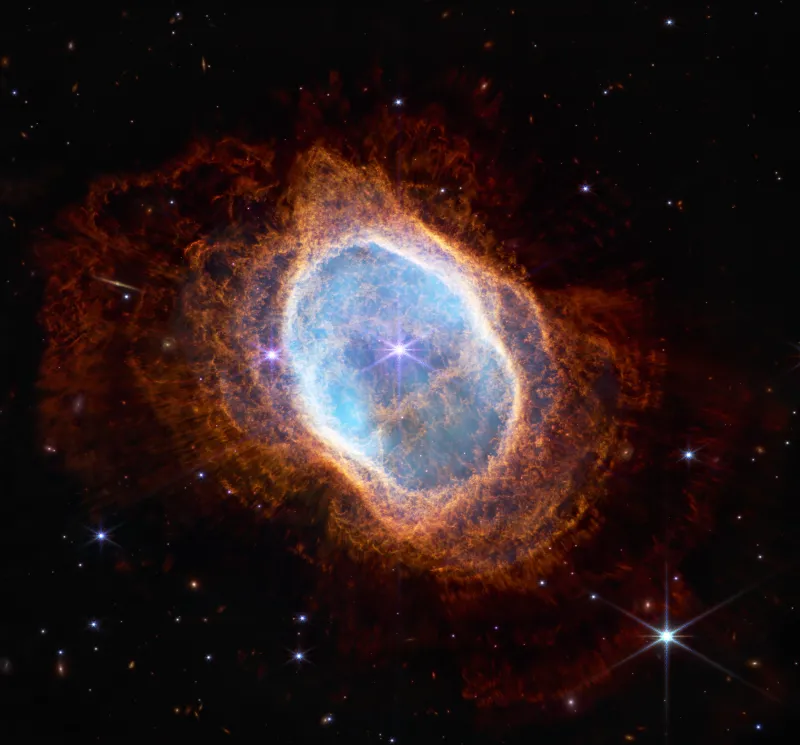
Vatican City, Jul 14, 2022 / 06:07 am (CNA).
The first images from the James Webb space telescope reveal God’s creation and feed our souls, a Jesuit brother and astronomer said Thursday.
“The images are gorgeous, as anyone can see for themselves. It’s a tantalizing glimpse of what we’ll be able to learn about the universe with this telescope in the future,” Brother Guy Consolmagno, director of the Vatican Observatory since 2015, said in a July 14 statement.
Consolmagno said the images are “a necessary food for the human spirit — we do not live by bread alone — especially in these times.”
“The science behind this telescope,” he said, “is our attempt to use our God-given intelligence to understand the logic of the universe.”
“The universe wouldn’t work if it weren’t logical,” he continued. “But as these images show, the universe is not only logical, it is also beautiful. This is God’s creation being revealed to us, and in it we can see both His astonishing power and His love of beauty.”
With roots dating to 1582, the Vatican Observatory is one of the oldest active astronomical observatories in the world. Its headquarters are in Castel Gandolfo, a town just outside Rome and the location of the summer residence of the popes.
The Vatican Observatory also operates the Vatican Advanced Technology Telescope, located in rural Arizona about 200 miles southeast of Phoenix.
Consolmagno said that he is personally delighted by the success of the Webb telescope because he is friends with many of the scientists who built the instruments and planned the observations.
“I know how long and how hard they and their colleagues have worked to make this incredible machine work. It is a tribute to the power of the human spirit, what we can do when we work together,” he said.
The Jesuit brother added that he is amazed and grateful to God that he has given humans, his creation, “the ability to see and understand what He has done.”
He quoted Psalm 8, which says, “When I consider your heavens, the work of your fingers, the moon and the stars, which you have set in place, what is mankind that you are mindful of them, human beings that you care for them? You have made them a little lower than the angels and crowned them with glory and honor.”
Consolmagno also pointed to the historic contribution of a fellow Jesuit astronomer, Father Angelo Secchi, in light of “Webb’s first spectrum of water vapor in the atmosphere of an exo-planet.”
About 150 years ago, Secchi “put a prism in front of his telescope lens on the roof of the St. Ignatius Church in Rome, and made the first spectral measurements of the atmospheres of the planets in our own solar system,” Consolmagno said.
“I can only imagine how delighted he would be to see the science he pioneered applied to planets unknown to him orbiting distant stars.”
If you value the news and views Catholic World Report provides, please consider donating to support our efforts. Your contribution will help us continue to make CWR available to all readers worldwide for free, without a subscription. Thank you for your generosity!
Click here for more information on donating to CWR. Click here to sign up for our newsletter.




We can see God’s astonishing power and love of beauty, completes and rectifies Consolmagno’s “Images [that] are a necessary food for the human spirit — we do not live by bread alone — especially in these times.”
Saint John of the Cross. a severe ascetic, would take walks with his brothers simply to rejoice in the beauty of God’s creation. Galileo Galilei was a religious man. He never married, although had a long time lover, Maria Gamba, and had two daughters Livia and Virginia. He placed Virginia [and I believe Livia] in the care of a convent of sisters. Virginia decided to be a nun and dedicated her life for the salvation of her father. A Jewish woman, Dava Sobel [Sobel was permitted by the Vatican to unlimited access to all the archives on Galileo], wrote an account of Galileo’s trial, his life and aspirations, and his continuous exchange of letters with his daughter Virginia who took the religious name Suor Maria Celeste. Celestial perhaps a purposeful predilection. Sister Maria Celeste was his angel of mercy constantly concerned, in prayer and sacrifice for her father.
I mention this because of the beauty of man in his relation to a God whose richness is beyond human comprehension, that even in man’s frailty he draws beauty. That the stars and endless heavens reflect.